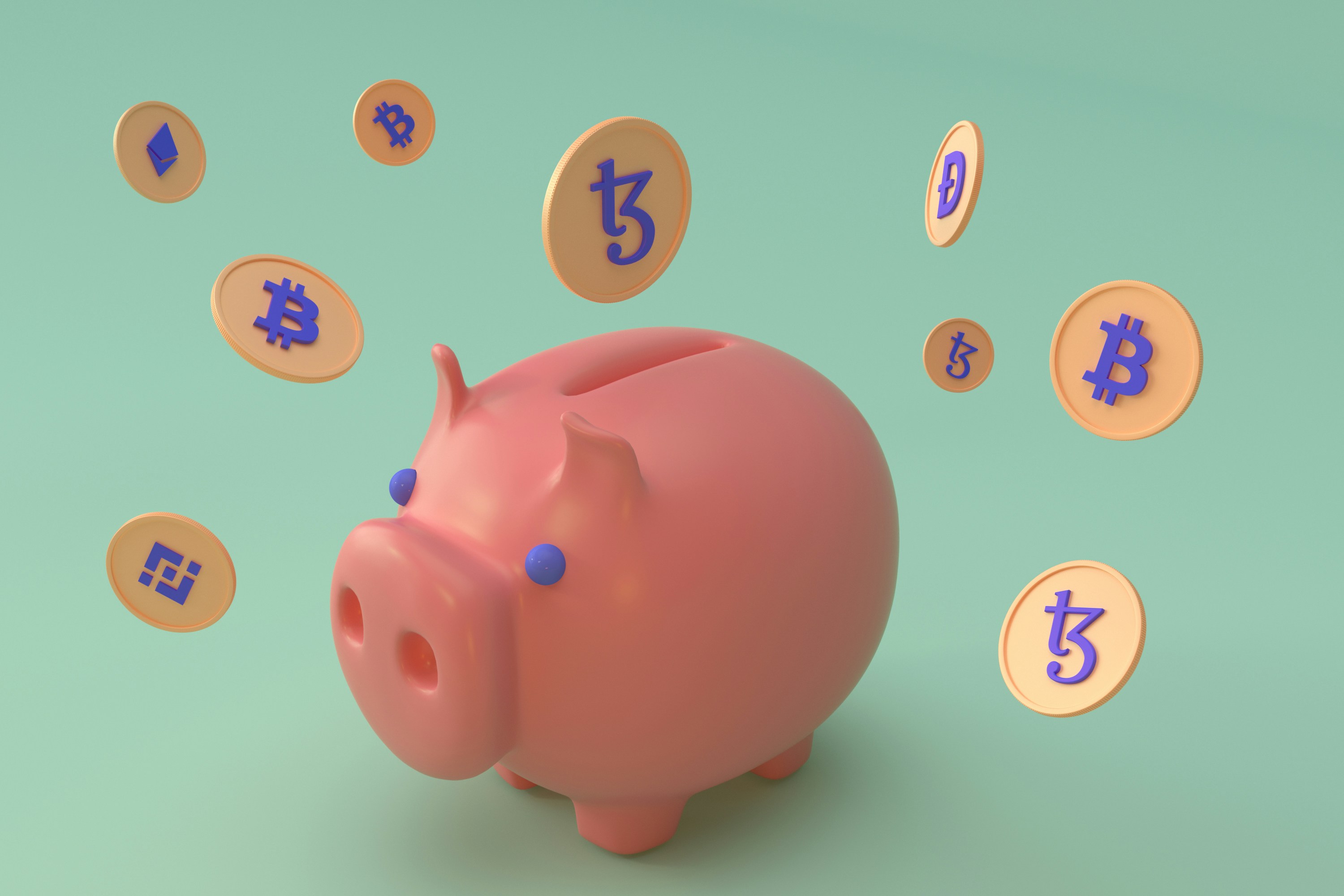On the Cash: Forecasting Recessions with Claudia Sahm (January 31, 2024 )
Buyers don’t like recessions. However how can they inform if one’s coming? There’s an indicator for that. It’s referred to as the “Sahm Rule,” named for economist Claudia Sahm. On this episode, we talk about tips on how to use labor knowledge to forecast recessions.
Full transcript under.
~~~
About this week’s visitor:
Sahm is a former Federal Reserve economist greatest identified for the rule bearing her title. She runs Sahm Consulting.
For more information, see:
Sahm Consulting
Keep-at-House (SAHM) Macro!
Substack
~~~
Discover all the earlier On the Cash episodes right here, and within the MiB feed on Apple Podcasts, YouTube, Spotify, and Bloomberg.
TRANSCRIPT
Buyers don’t love recessions. Dangerous issues occur when the economic system contracts. Prime-line company development stops, income and earnings fall, which sends inventory costs decrease.
Ever for the reason that pandemic ended, a number of buyers fearing a recession was imminent have gotten scared out of fairness markets that any day now recession nonetheless hasn’t proven up. That is regardless of the prediction of many well-known economists over the previous 2 years.
There nonetheless has been no recession. Because it seems, there are methods buyers can inform if an financial contraction is admittedly coming.
[Music]
I’m Barry Ritholtz, and on as we speak’s version of At The Cash, we’re gonna talk about tips on how to precisely establish– prematurely, in real-time – when the economic system goes into recession. To assist us unpack all of this and what it means in your portfolio, let’s herald Claudia Sahm. She is a former Federal Reserve economist and creator of what has develop into often known as the Sahm rule.
Claudia, welcome to Bloomberg’s At The Cash.
Claudia Sahm: Completely satisfied to be right here.
Barry Ritholtz: So let’s begin with the fundamentals. Inform us what occurs to the economic system throughout a recession.
Claudia Sahm: A recession is a broad-based contraction in financial exercise. So it’s not about business, it’s not about one a part of the nation. It hits All of us in a recession hits exhausting. It’s and that’s why we wanna battle them. That’s why we wanna know in the event that they’re coming.
Barry Ritholtz: In order that clearly shouldn’t be nice. How lengthy and deep are the everyday recessions?
Claudia Sahm: It varies. It depends upon what occurred. The worldwide monetary disaster in 2008, that was a giant, quick, deep recession. That was very unhealthy.
2001, the bursting of the dot com bubble. That’s one of many mildest recessions that we’ve seen in a really very long time. So it depends upon what hits us as to how exhausting we go down.
Barry Ritholtz: Actually attention-grabbing. It’s humorous you talked about ‘01 as a result of the 12 months earlier than and the 12 months after 2000 and 2002 was a kind of uncommon years when the inventory market was down, regardless that there wasn’t a recession. Surprisingly, that was a reasonably delicate recession. The place did the 2001 recession present up within the knowledge?
Claudia Sahm: In 2001, we noticed the unemployment price rise, not as a lot as in 2008 or in 2020. And we did see GDP decline, although it was not as extreme as we’ve seen in different recessions.
Barry Ritholtz: So that you developed an indicator, what individuals name the Sahm rule, to assist us determine prematurely when recessions are coming. Inform us about it.
Claudia Sahm: The Sahm rule appears for comparatively small will increase within the unemployment price to say we’re in a recession. Particularly, we take a look at the unemployment price, the nationwide unemployment price, take the 3-month common. We don’t wanna get faked out by the bumps and wiggles. We examine the newest studying to the bottom of those 3-month averages over the prior 12 months.
If that distinction is half a share level or extra, We’re in a recession.
Barry Ritholtz: So let me get slightly extra particular. How well timed is that this indicator when it goes off and what’s its observe file been like?
Claudia Sahm: It has an ideal observe file for the reason that 1970s. It’s by no means triggered exterior of a recession and it’s at all times triggered early in a single. Far sooner than we might have the official recession courting by the Nationwide Bureau of Financial Analysis, and it’s inside the first 3, Four months of a recession, and that is also earlier than, we might have the two quarters of GDP that might usually be used to say we’re in a recession.
Barry Ritholtz: Though we’ve seen 2 detrimental quarters of GDP the place we haven’t had recessions. That’s not an official indicator wherever. It simply appears to be a rule of thumb that, some international locations use, however we don’t actually use that right here in the US. Proper? Now we have the NBER and all of their many, uh, indicators that they observe.
Claudia Sahm: What’s superb is so many relationships have damaged on this COVID and the restoration. That 2 quarters of a decline in GDP at all times occurs in a recession. You gotta return to 1947 to discover a time when you may have 2 quarters exterior of a recession. In order that simply exhibits one needs to be actually cautious proper now with the “guidelines of thumb” which have labored up to now.
Barry Ritholtz: Proper. You will discover a superb parallel between the post-war period and the post-pandemic period, big fiscal stimulus, etcetera. However let’s keep on with the Sahm rule for a second. Most financial guidelines that I’m conversant in, they’re fairly advanced, they depend on quite a lot of transferring components. The Sahm rule appears pretty easy – a single labor market indicator – Is that oversimplifying the complexity of the economic system, or do all roads within the economic system result in the labor market?
Claudia Sahm: The Sahm rule is straightforward by design. Its goal was to say, “hey, Congress ship out the stimulus checks.” And albeit, do it robotically, simply tie it to the Sahm rule. That’s why it exists. It’s been used for lots of different functions just lately.
I’ll say there’s a saying amongst economists. If you happen to needed to be on a desert island and you would solely have one knowledge sequence to inform you what the US economic system is doing, it’s the unemployment price. [umm hmm]. It’s it tells us a lot for lots of various causes.
It tells us a lot about the place we’re. And albeit, as you see it begin to drift up, it could inform us the place we’re headed. It’s not an ideal sign, however it’s one thing to say, “Yeah, even earlier than the summer season would set off, you must take note of it.”
Barry Ritholtz: So let’s discuss slightly bit about that. You recognize, for the reason that pandemic ended, It appears nearly instantly after the restoration started, we started listening to a couple of recession. This has already been occurring for two years. It’s imminent. It’s about to occur.
And as that drumbeat has gotten louder, inflation has gone down, unemployment has fallen, client spending has remained sturdy, even wage positive factors have gotten higher. If something, the economic system has improved.
Why this fixed drumbeat {that a} recession is imminent?
Claudia Sahm: Many economists, lots of my friends received caught within the 1970s.
Inflation went up. I imply, legitimately, in 2021, that was the primary time in a very long time we’d seen Inflation above 2 p.c. It spiked, it went up quick. If you happen to i knew nothing else and simply noticed inflation going up, usually, you’d say, ”Oh, okay, the Federal Reserve has gotta step in. They gotta increase rates of interest.” And up to now, when the Fed has carried out that, it leads to a nasty place. Proper. Like, it’s exhausting to do this.
The purpose I had made all the time was that almost all of that inflation was coming from disruptions from COVID. And as we went into 2022, there have been additionally disruptions from Putin invading Ukraine. [Mhmm]. That’s not demand. That’s not what rates of interest remedy.
Jay Powell didn’t unload the docks in LA. He didn’t take a second job. He didn’t give the vaccine out. These have been all issues that wanted to occur to get inflation down.
It has been so gradual to get again on observe, and but 2023 – which we have been informed was inconceivable – huge declines in inflation, unemployment at its lowest in, you realize, for the reason that 1960s. That shouldn’t have occurred, and but it made good sense if you considered, “Hey, there was a pandemic; Hey, there was a warfare in Europe.”
In order that’s what has labored out, and that’s what places us on a path to the elusive comfortable touchdown.
Barry Ritholtz: So to paraphrase James Carville, it’s the pandemic, silly. [Mhmm].
So what different intervals are there in historical past which can be kinda corresponding to what we’ve skilled over the previous 12 months or two, the place there are all these recession warnings, and but no recession?
Claudia Sahm: Recessions aren’t imagined to be forecastable. So for two years to have recession calls so loud has been slightly thoughts blowing. Proper? Like, we’re not imagined to know when these are coming – and we’re definitely not imagined to be so sure about it –
you’d should go exterior of dwelling reminiscence to seek out episodes of inflation, like what we’re seeing after the 2 world wars, after the 1918 pandemic.
I imply, these are locations we don’t have excellent knowledge [Right]. In phrases and and we clearly don’t have expertise with them.
So to gravitate again to the 1970s, the Volcker Fed, you realize, the early eighties, it it is sensible why that’s the place individuals go as a result of that’s the place we have now knowledge. That’s what we studied. However, like, that’s not what that is.
Barry Ritholtz: Very totally different world within the seventies than as we speak. So that you talked about we don’t have a large knowledge set. What have we had, 17 recessions up to now century and alter? Provided that we are able to’t be typically assured about recession forecasts, how assured ought to we be within the Sahm rule? You truly had mentioned, “Hey, perhaps it’s not gonna be proper this time.”
Claudia Sahm: Completely. If the Sahm Rulw have been gonna break, It will be this time and break within the sense that we may hit that half-a-percentage level set off, after which the unemployment price doesn’t actually rise that rather more. We don’t go into recession.
Sometimes, after the Sahm Rule triggers, you may have nearly a Four share level improve in unemployment relative to the low. 2001, that was the smallest, and it was Employment relative to the low. 2001, that was the smallest, and it was even nonetheless 2 share factors
So it will be very Not ordinary so that you can stand up to 4% which – we kinda have to hold round 4% for some time to have it set off – after which simply kinda cling there And perhaps come again down later. There’s an excellent case for why this might occur. It goes again to those disruptions of COVID. We. it’s taken the labor market time to heal too. We had all these labor shortages. We have to convey individuals again in.
Thousands and thousands of individuals walked away from jobs due to Caregiving as a result of they didn’t wanna die, and we stopped processing immigrant work visas. So this stuff are taking place. There’s this sort of catch-up now. Now it’s like there are extra individuals and the roles should catch up versus within the labor scarcity it was the opposite manner round. That simply could make issues actually messy. And, once more, if the summer season have been ever going to interrupt, it’s this time. And albeit, we have now seen relationships breaking left and proper, so I might be in good firm.
Barry Ritholtz: So let’s discuss concerning the issues which have damaged within the post-pandemic period.
We’ve seen shortages of single-family houses. We’ve seen Shortages of semiconductors – it’s nonetheless an extended solution to get a brand new vehicle – and it seems that we’re nonetheless coping with a labor scarcity.
What number of extra employees does this nation want to scale back a number of the tightness within the labor market?
Claudia Sahm: We began to make a superb little bit of progress within the second half of final 12 months when it comes to getting employees again. And in some circumstances, even higher than earlier than. Girls’s prime-age employment is at file highs; the proportion of employees with disabilities who’ve jobs – file excessive. Even some very marginalized teams like black males, their labor drive participation has appeared nice. Black unemployment price has been low. We want these teams to come back in, not simply to make up the opening that the pandemic created, however to, like, preserve it going – the labor market is admittedly sturdy proper now. And that’s that’s a superb factor.
And that one factor that we have to construct on as a result of as you stated, like, there’s nonetheless a necessity for expertise and productiveness, and that was the large kinda underneath the hood story of final 12 months.
Claudia Sahm: So I wanna go away buyers with slightly bit of recommendation from the creator of the Sahm rule. Inform individuals what they need to be in search of in the event that they actually wanna have the easiest way of anticipating a possible recession.
Claudia Sahm: Preserve your eyes on the labor market. The labor market is so important to American customers. Like, your paycheck, that’s what you spend. So if we lose the labor market, we lose customers. If we lose customers, we’re carried out.
Barry Ritholtz: And that’s how we get a recession and usually a weak inventory market.
So to wrap up: Buyers who’re involved about all these recession calls we’ve been listening to about for the previous 2 years ought to simply ignore them.
And for those who actually wanna know when a recession is coming, preserve your eye on the unemployment price, when the 3-month transferring common ticks up 0.50 of a share level relative to its earlier 12-month low – that’s a warning signal – prepare for a doable recession.
I’m Barry Ritholtz, and that is Bloomberg’s on the Cash.
~~~



